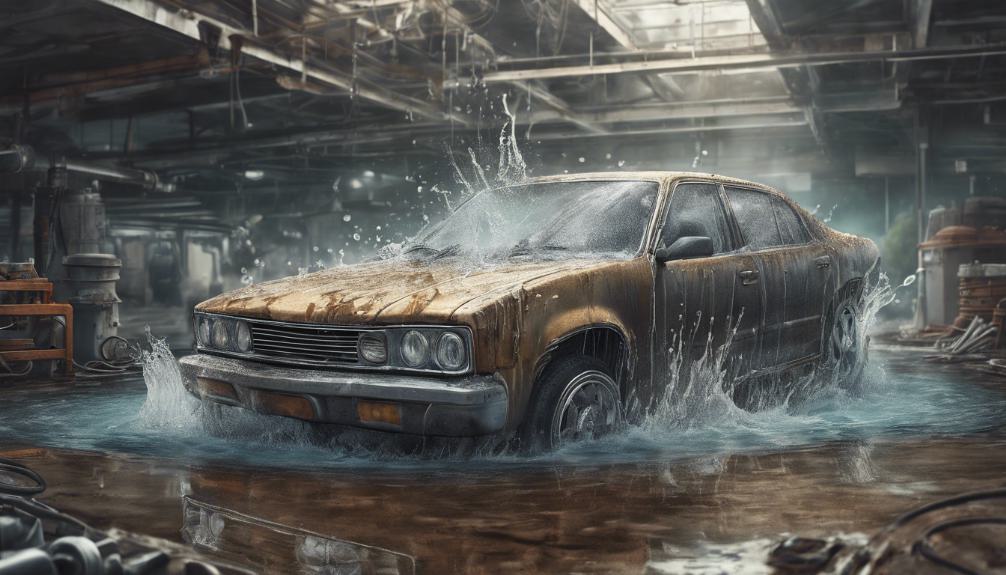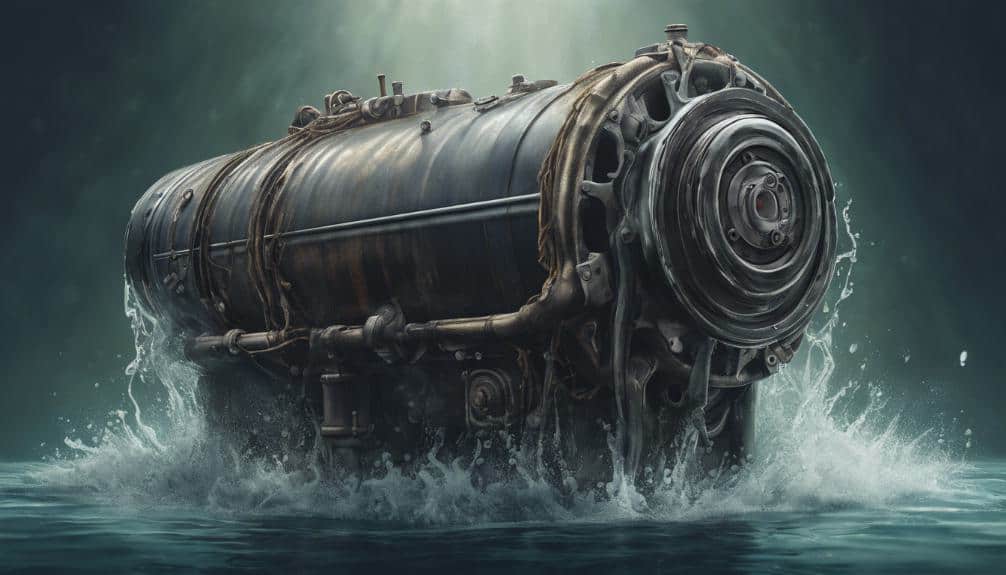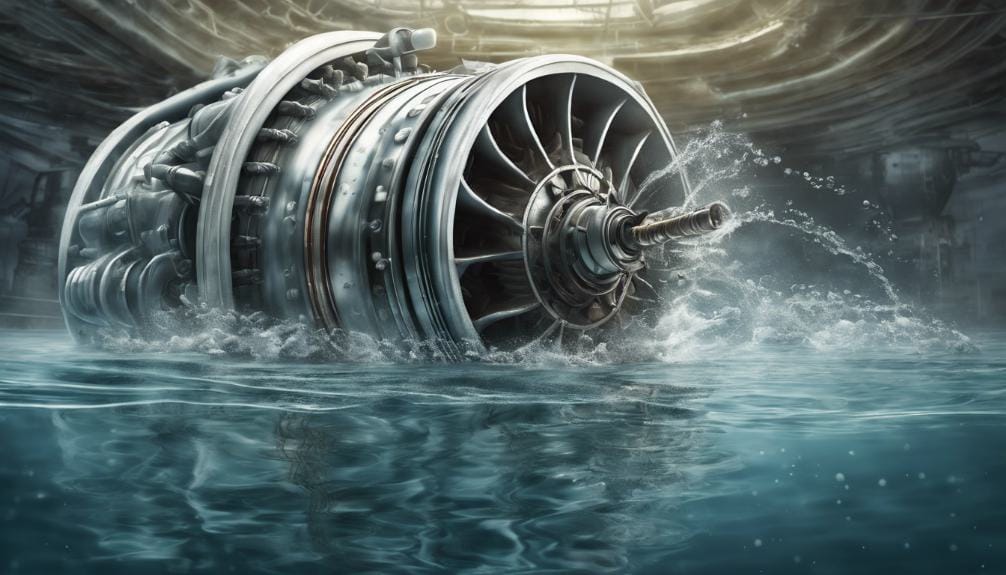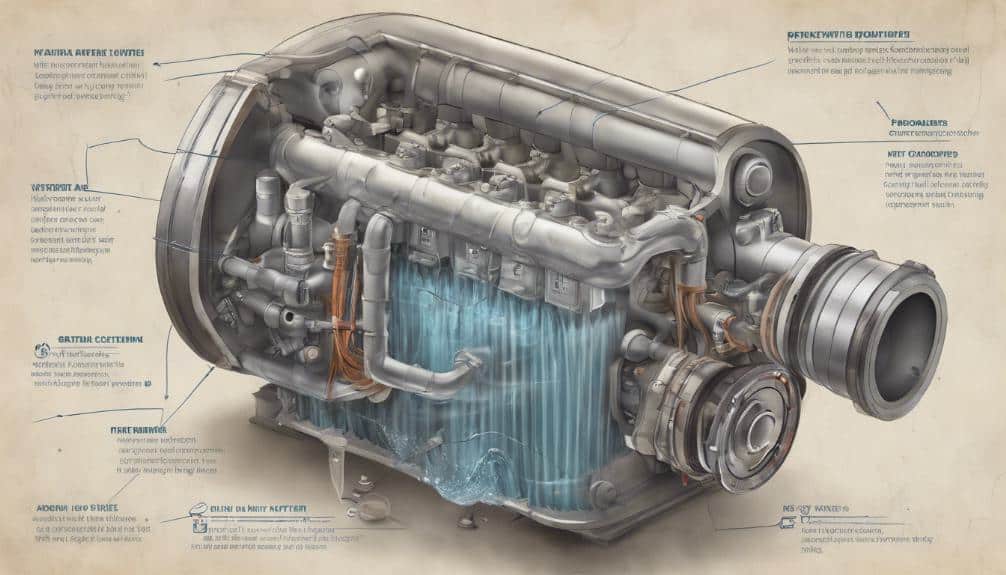If you’ve ever experienced a sudden engine stall or strange noises coming from under the hood, you might be familiar with the ominous Hydrolock.
But do you know the full extent of its symptoms, causes, and most importantly, how to prevent it from wreaking havoc on your engine?
Understanding these pivotal aspects can save you from potentially costly repairs and unexpected breakdowns.
Key Points
- Recognize symptoms like engine stalling and unusual noises.
- Identify causes such as water damage and mechanical failures.
- Prevent hydrolock with regular maintenance and proper seals.
- Be cautious with marine engines, especially turbocharged systems.
- Use prevention tips like inspecting air intake systems and avoiding flooded areas.
Common Symptoms of Hydrolock

If you suspect hydrolock in your engine, watch out for these common symptoms.
Engine stalling, unusual noises, decreased power, misfires, and failure to start are all potential signs of hydrolock.
Hydrolock occurs when water enters the engine cylinders, causing damage that can be detrimental if not addressed promptly.
To prevent engine damage from hydrolock, it’s vital to be vigilant and take preventive measures.
Regular maintenance, such as checking for leaks in the intake system and avoiding driving through deep water, can help reduce the risk of hydrolock.
If you experience any of the mentioned symptoms, it’s essential to stop driving immediately and have your vehicle inspected by a qualified mechanic. Ignoring these signs can lead to severe engine damage, resulting in costly repairs.
Causes of Hydrolock in Engines
Hydrolock in engines results from water entering the cylinders, often due to driving through deep water or in flooded conditions. To explore the causes of hydrolock further, consider these factors:
- Water Damage: Driving through flooded areas or deep puddles can allow water to seep into the engine cylinders, causing hydrolock.
This water can prevent the pistons from completing their cycles, leading to potential engine damage.
- Mechanical Failures: Issues such as cracked cylinder heads, faulty gaskets, or engine misfires can create pathways for water to enter the combustion chambers.
These mechanical failures can increase the likelihood of hydrolock occurring in your vehicle.
- Abnormal Operating Conditions: Certain conditions, like driving in heavy rain or splashing through standing water at high speeds, can exacerbate the risk of hydrolock.
Being aware of these abnormal operating conditions can help you prevent water damage to your engine and avoid the costly repercussions of hydrolock.
Special Cases in Marine Engines

In marine engines, encountering unique circumstances can lead to specific challenges related to hydrolock. Special cases in marine engines pose additional marine engine risks, especially in turbocharged systems.
For instance, small boats and personal watercraft can ingest water during rollovers, potentially causing hydrolock.
Inboard marine engines face a heightened risk of hydrolock due to the water mixing with exhaust gases.
Rusted exhaust headers or prolonged starter use are common culprits behind hydrolock incidents in marine engines.
Whats more, turbocharged marine engines with rusted intercoolers may inadvertently ingest water, resulting in hydrolock issues.
To mitigate these risks, special air intakes and low rotating inertia systems are incorporated into marine engines, which help reduce the chances of severe damage from hydrolock.
Understanding these unique scenarios and taking preventive measures can safeguard your marine engine from the perils of hydrolock.
Preventing Hydrolock in Diesel Engines
To prevent hydrolock in diesel engines, it is crucial to conduct regular maintenance checks on seals and exercise caution when operating in flood-prone areas.
Proper maintenance is key to ensuring the seals in your diesel engine are in good condition and can effectively prevent water from entering the combustion chamber.
Here are some tips to help you prevent hydrolock in diesel engines:
- Regular maintenance: Schedule routine checks of seals to detect any signs of wear or damage early on.
- Proper seals: Ensure all seals are correctly installed and functioning correctly to prevent water infiltration.
- Caution in flood-prone areas: Be extra vigilant when driving in areas prone to flooding, and try to avoid deep water to minimize the risk of hydrolock.
Hydrolock in Radial and Inverted Engines

After sitting for a prolonged period, radial and inverted engines may be susceptible to hydrolock due to engine oil seepage filling a cylinder.
Engine maintenance is vital to prevent hydrolock in these engines. To guarantee aviation safety, it’s essential to conduct pre-flight checks diligently.
Keep an eye out for blue-white smoke, as it can indicate oil seepage in radial engines, signaling a potential hydrolock risk.
One common pre-flight inspection method to prevent hydrolock in radial and inverted engines is slowly cranking the propeller. This action helps to clear any excess oil that may have accumulated in the cylinders.
Regular engine maintenance and thorough pre-flight checks are key practices to avoid the risks associated with hydrolock in radial and inverted engines.
By staying proactive and attentive to signs of oil seepage, you can enhance aviation safety and prevent potential engine damage. Remember, prevention is always better than dealing with the consequences of hydrolock during flight.
What Are the Causes and Symptoms of Hydrolock, and How Can It Be Prevented?
Hydrolock occurs when liquid enters an engine’s cylinder, preventing the piston from compressing the mixture. Causes include water intake or coolant leaks. Symptoms include a sudden stoppage of the engine and inability to restart. Prevention requires regular maintenance and, in flood conditions, using a “siphoning gas safely comprehensive guide” to protect the fuel system.
Hydrolock Risks in Steam Engines
Steam engines face a significant risk of hydrolock due to the condensation of steam back into water, potentially causing severe damage.
When water enters the engine, it can lead to catastrophic consequences, making it vital to grasp the risks associated with hydrolock in steam engines.
Here are some key points to ponder:
- Maintenance Techniques: Regular maintenance is vital to prevent hydrolock in steam engines. Inspecting cylinder drain cocks and ensuring they’re functioning properly can help mitigate the risk of water accumulation.
- Troubleshooting Methods: Understanding the signs of potential hydrolock, such as unusual engine sounds or performance issues, can aid in early detection and preventive measures.
- Historical Incidents, Engineering Advancements: Learning from past incidents involving hydrolock in steam engines can inform current engineering advancements aimed at enhancing safety measures and reducing the likelihood of hydrolock occurrences.
Effective Prevention Tips for Hydrolock

Inspecting and maintaining air intake systems regularly is key to effectively preventing hydrolock in engines.
By implementing proper maintenance practices, such as checking for leaks, cracks, or signs of water damage in the intake system, you can greatly reduce the risk of hydrolock.
Furthermore, considering the use of snorkel kits or air intake relocation kits can elevate the intake point, keeping it above potential water levels and further safeguarding your engine against hydrolock.
These kits are especially beneficial for off-road vehicles or those frequently exposed to water crossings.
Also, avoiding driving through flooded areas or deep puddles whenever possible is essential in minimizing the chances of hydrolock.
Ensuring your engine is adequately warmed up before pushing it to higher speeds can also help prevent hydrolock during operation.
Investing in quality air filters is another preventive measure, as they can act as a barrier against debris and water, further decreasing the likelihood of hydrolock occurring.
By following these preventative tips, you can better protect your engine from the dangers of hydrolock.
As an Amazon Associate we earn from qualifying purchases.










